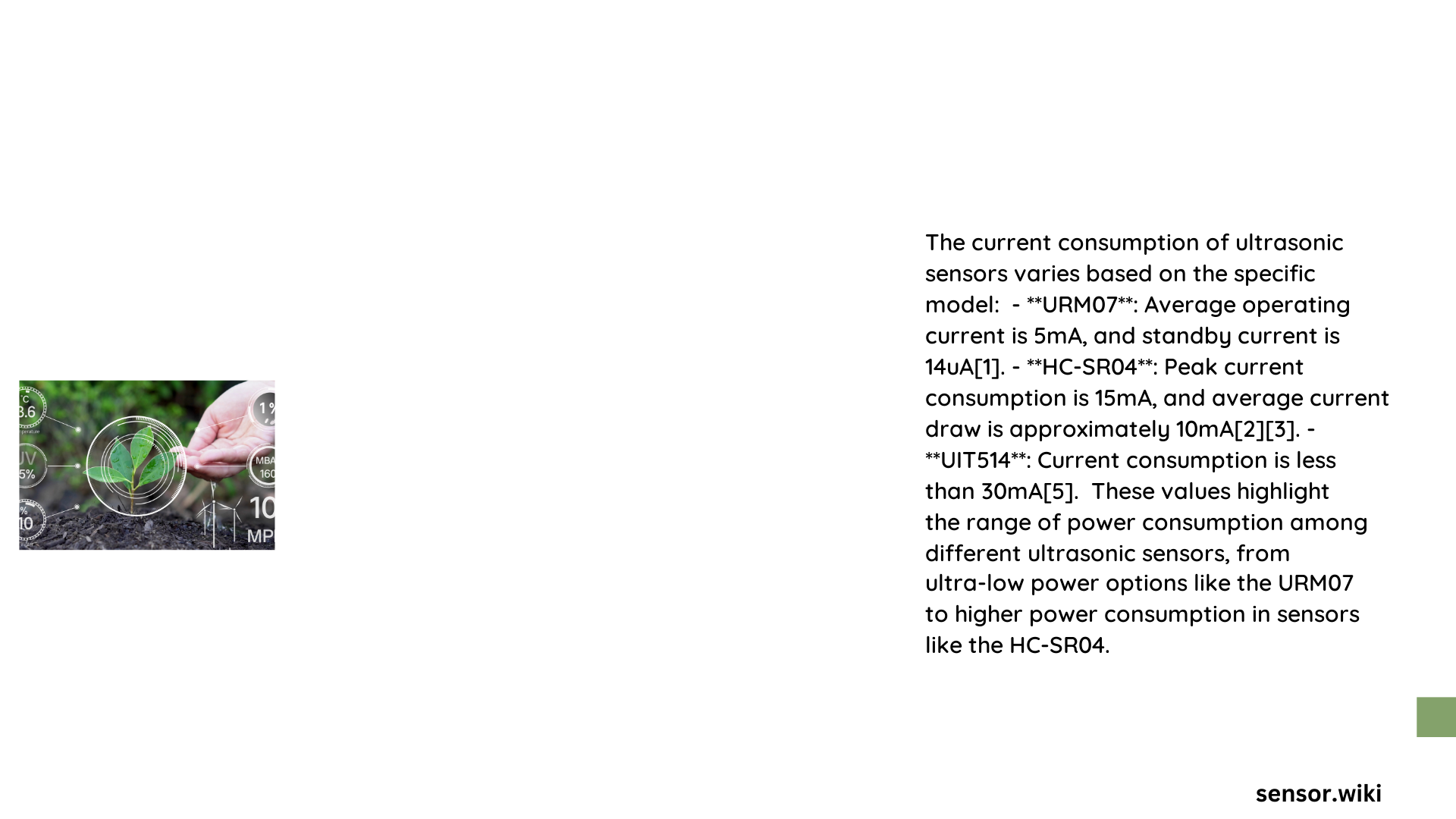Ultrasonic sensors are critical electronic components that consume varying levels of electrical current during operation. Understanding their current consumption is essential for designing efficient embedded systems, battery-powered devices, and precision measurement applications. Engineers and designers must carefully analyze power requirements to optimize sensor performance and energy management.
What Determines Ultrasonic Sensor Current Consumption?
Ultrasonic sensor current consumption depends on multiple factors, including:
- Operating Mode
- Active transmission
- Standby/sleep state
-
Continuous monitoring
-
Power Supply Voltage
- Typically 3.3V to 5V
- Direct impact on current draw
How Much Current Do Ultrasonic Sensors Actually Consume?
| Sensor State | Current Range | Voltage | Power Consumption |
|---|---|---|---|
| Active Mode | 6-15 mA | 5V | 30-75 mW |
| Standby Mode | 0.4-1.8 mA | 5V | 2-9 mW |
| Peak Transmission | Up to 100 mA | 5V | 500 mW |
What Factors Influence Current Consumption?

Several critical factors impact ultrasonic sensor current consumption:
- Transmission Frequency: Higher frequencies typically require more power
- Pulse Width: Longer pulses increase current draw
- Environmental Temperature: Can affect sensor efficiency
- Sensor Design: Different models have unique power characteristics
How Can Engineers Optimize Current Consumption?
Practical strategies for managing ultrasonic sensor current consumption include:
- Implement intelligent power cycling
- Use low-power sensor variants
- Minimize unnecessary transmission cycles
- Select appropriate voltage regulators
- Employ hardware-level power management techniques
What Are Measurement Challenges?
Measuring ultrasonic sensor current consumption presents several technical challenges:
- Capturing intermittent peak current spikes
- Accounting for environmental variations
- Selecting appropriate measurement equipment
- Understanding complex power dynamics
Practical Recommendations for Current Consumption Management
- Use high-resolution current measurement tools
- Test sensors under diverse environmental conditions
- Implement MOSFET-based power switches
- Consider sensor-specific power profiles
- Design with energy efficiency as a primary consideration
What Are Real-World Implications?
Current consumption directly impacts:
– Battery life in portable devices
– Thermal management
– Overall system reliability
– Cost of operation
By understanding and optimizing ultrasonic sensor current consumption, engineers can develop more efficient and reliable electronic systems across various applications.
Reference:
– Arduino Forum Discussion
– Texas Instruments Application Note
– Sensor Power Consumption Research
